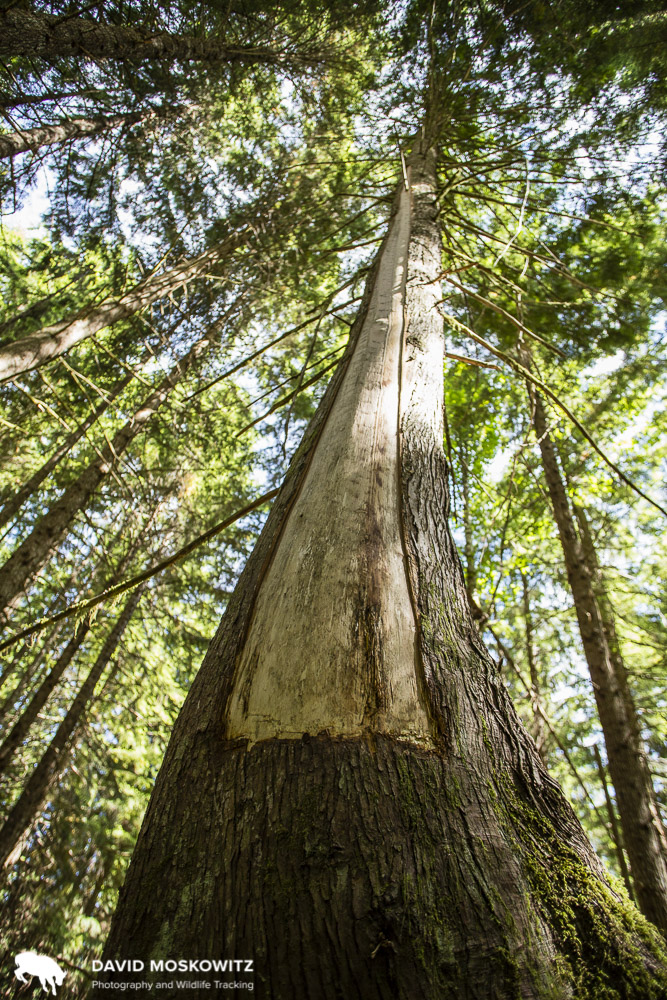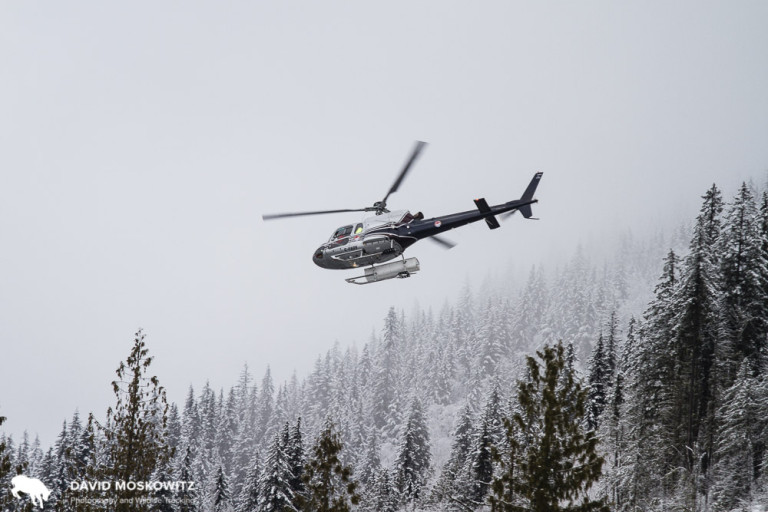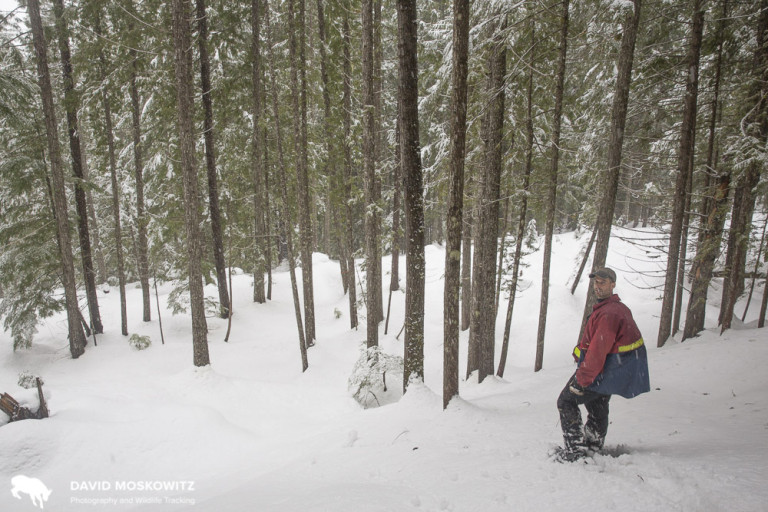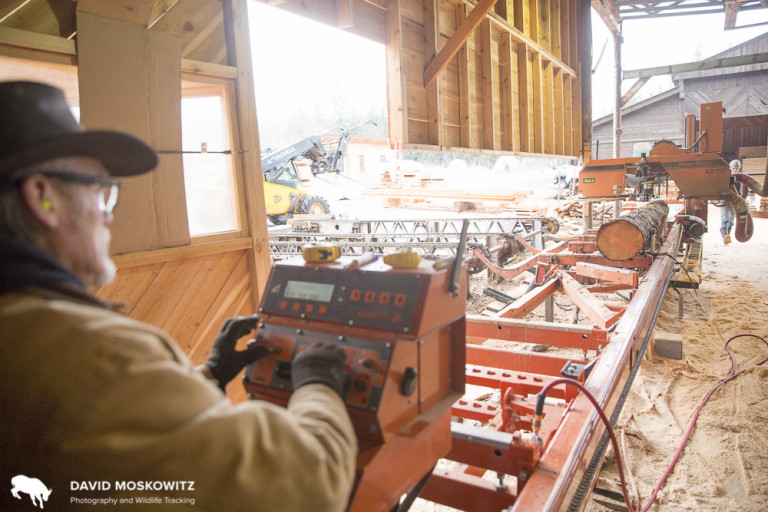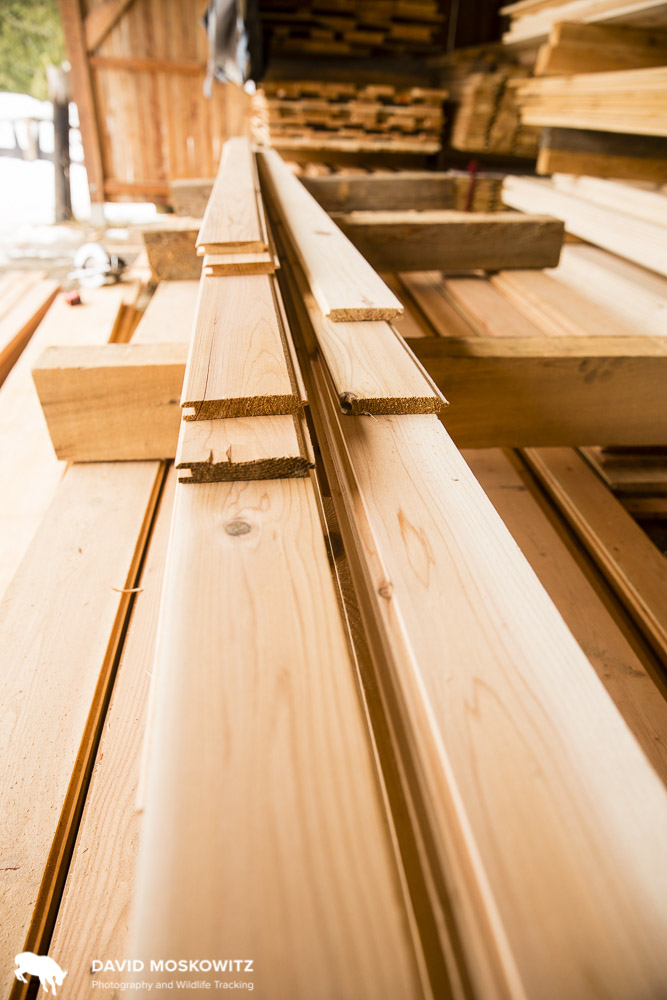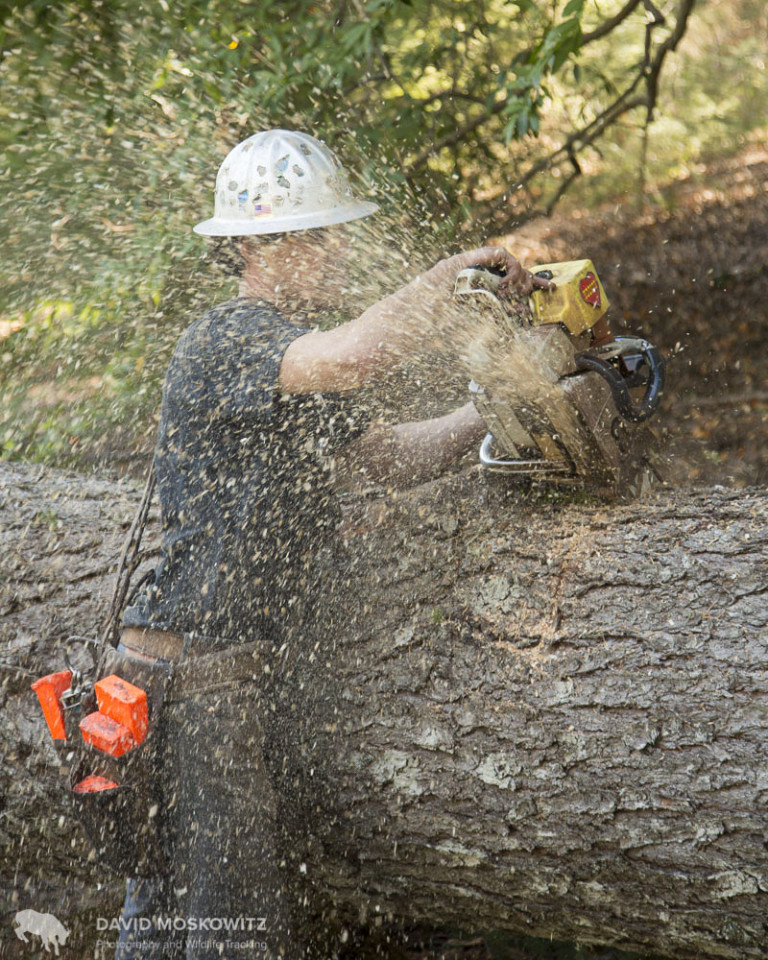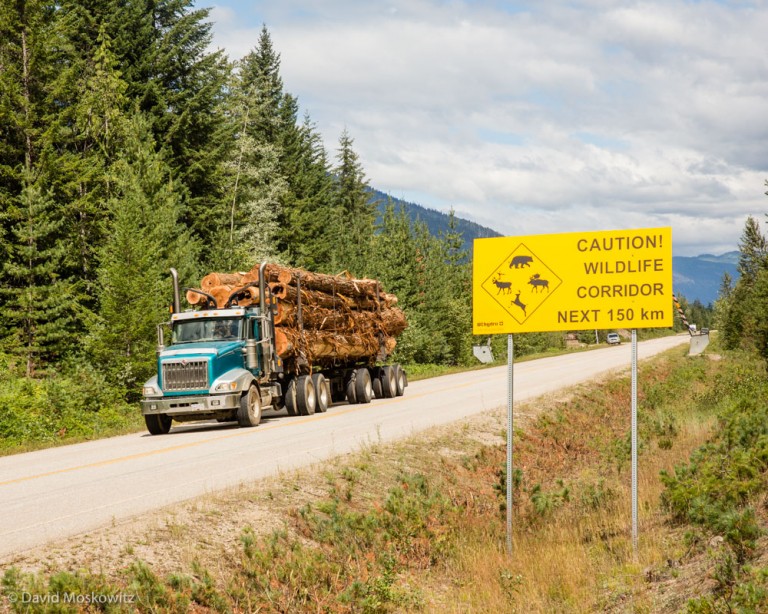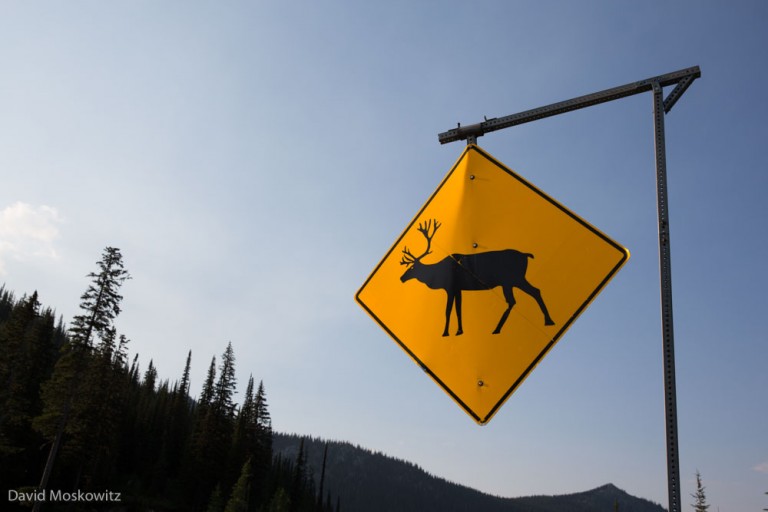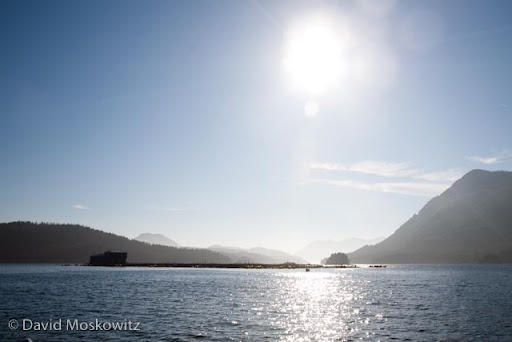(Un)Clearcut
(Un)Clearcut
In British Columbia a complex forest management system leaves old growth vulnerable to logging.
My latest reporting (text and photography) from the Caribou Rainforest just published in Earth Island Journal. The piece explores how the provinces Old Growth Management Areas have failed to protect old growth across the province due in large part to loopholes in the legislation and a complete lack of government oversight of the forest industry.
Skin of the Cedar
Skin of the Cedar
Text by Kim Shelton with David Moskowitz. Photos by David Moskowitz
Kim Shelton inspects the bark of a cedar tree which was cut and left in a cut block on public lands in mountain caribou habitat in the southern Selkirks of British Columbia.
My love of working with cedar bark was sparked years ago when I took a hat weaving class from the Snoqualmie tribe, the indigenous people from the Snoqualmie river valley in western Washington where I currently live. The Snoqualmie held a public class at their tribal office taught by ethnobotonist and author Heidi Bohan, to teach anyone who was interested the complex traditional art of cedar bark weaving. When I touched the warm, wet, flexible, and unbelievably strong strips of inner bark of the cedar for the first time, I fell in love. It reminds me so much of leather every time I work with it--it truly is the skin of the tree. The reverence with which the cedar bark is handled during weaving is inspiring. For some items the long strips of bark must never touch the ground, instead being wrapped countless times around the weavers neck and shoulders in many loops.
Since that class I have harvested cedar bark myself, going out in the spring to carefully pick a tree, cut into the bark and push my hands into the slippery space between the wood and the inner bark. To pull the bark from a cedar is an intimate experience, it cannot be done without taking something from the tree—without hurting it. And yet, when harvested carefully, the tree will survive, though forever with the scar of what you have done. There is an exchange between the weaver and the tree: the human is taking some of the trees beauty, but in return is left with the responsibility to create something just as beautiful with what has been taken-- a relationship between people and the tree which built on a foundation of respect. I always leave something for the cedar when I strip it, an offering or a prayer, to say thank you. One time, a song came to me, so now I sing to them every time I harvest bark.
A recent cedar bark harvest. Traditional harvesting methods dictate how to harvest bark and how much should be taken from any particular tree in order to protect the overall integrity of the tree. The scar from such bark pulls can last for hundreds of years on these long living trees, a reminder of the long standing relationship between people and cedar trees in the Pacific Northwest.
Cedar bark carefully harvested from a young cedar tree (seen in the background) in Washington State by Kim Shelton. Photo by Kim Shelton.
Heidi taught me that for the Snoqualmie people the western red cedar is a sacred tree, as it is for many of the indigenous peoples of this part of the continent. One of its names is the Tree of Life, because for the people of the Pacific Northwest it was used in almost every aspect of life, from construction of houses and canoes and rope to haul whales in with, to baby diapers and clothing. The fronds are full of volatile oils, making it a strong medicine during cold season. It is naturally antifungal, making it the perfect material for life in the damp rainforest. The cedar tree is also a healing tree, healing to the soul and the heart. I have been told that just to stand with your back against a cedar tree will give you strength. I have found this to be true.
A cedar bark basket made by Kim Shelton filled with huckleberries. Photo by Kim Shelton.
The colonial culture of European Americans who came to this region developed a very different relationship with the cedar tree. As a part of the Mountain Caribou Initiative, we try to find caribou, and this involves walking and driving by many, many clearcuts in the inland rainforest where these animals live. Every time I see a clearcut I am struck by the waste that is left behind. But recently, in the Southern Selkirk mountains of British Columbia, I came across something which, to me, felt not just wasteful, but unbelievably disrespectful from the perspective of how I was taught to care for the gifts that cedar trees have to share with humans. In the corner of a recent cutblock Dave and I wandered through on our search for caribou, I walked up to multiple giant cedar trees that had been cut at their roots and left to rot on the ground. The bark was falling off like dead skin. Some old trees are cut and found to be rotten in the inside, and so are left behind because they won’t make a profit. But these trees didn’t have that, and for the life of me I couldn't come up with a reason why they had to be cut and left.
Are these forests worth protecting for their own sake? Or does the western mindset need an endangered warm-blooded creature like mountain caribou to empathize with in order to inspire protection for what we see simply as habitat for an animal? If these caribou disappear completely, so will the limited protections they have provided to these forests in British Columbia. Will our society learn to see the forest for the trees before we have completely squandered the amazing natural heritage this part of the planet has been blessed with? A heritage and resource the original human inhabitants recognized and stewarded with so much care for thousands of years before the arrival of Europeans and global capitalism. Like the remaining uncut inland rainforest, and the last herds of caribou who now defend them, the wisdom and reverence the first people of this region have for both trees and animals hasn’t disappeared completely. Perhaps to protect these forests and caribou, we must also restore a relationship between the forests and the people built on mutual respect and a covenant which is built on the understanding that the forest cares for the people and in return the people care for the forest.
The interior rainforest of the Pacific Northwest in many ways resembles the more well known forests of the coasts, though it is even more rare, being the largest and most interior such forest left on the planet. Towering western red cedars loom over an understory of devil’s club and other plants typically associated with coastal landscapes.
A rare stand of middle elevation old growth cedar-hemlock forest in the Southern Selkirks. This forest is protected within the Nature Conservancy of Canada’s Dark Woods Preserve, set up specifically to protect mountain caribou habitat.
“The cedar tree is also a healing tree, healing to the soul and the heart. I have been told that just to stand with your back against a cedar tree will give you strength. I have found this to be true” says Kim Shelton, here seen doing just that on a cedar tree on the edge of a recent cutblock in the BC Selkirk Mountains.
Just down the road, Dave and I found caribou tracks exiting another clearcut. In light of the incredible efforts by the province of British Columbia, First Nations, and conservation groups to protect inland temperate rainforest for the fragile mountain caribou population, seeing such clear evidence that their habitat is still being destroyed is confusing. It is even more confusing to realize that, in the process of destroying this sensitive habitat and globally unique ecosystem, we are wasting of the amazing bounty of these trees. And this is within the context of the deep reverence the original human inhabitants of this region hold for these amazing forests.
Does the economic calculations of the timber industry and the British Columbia provincial government accurately reflect how our society values cedar trees and ancient forests? Does their behavior in these forests reflect the values we as a society wish to express in our treatment of the forests and wildlife of this region? (Bobcat and cedar tree in Washington State)
What is conservation? A View Into the Human Economy in the Heart of Mountain Caribou Country
What is conservation? A View Into the Human Economy in the Heart of Mountain Caribou Country
Revelstoke is a small city in the heart of the Columbia Mountains, about an hour west of Rogers Pass on the Trans Canada Highway. During my recent stay in Revelstoke, British Columbia, the most thoughtful description of the economy was shared with me by Michael Copperthwaite, the General Manager of the Revelstoke Community Forest Corporation. He described it as a resource extraction town with a veneer of ecotourism. A few days in town will confirm that both of these industries have a strong presence in the community. You can watch log trucks, loaded with old growth cedar, roll by to the mill on the south end of town, while stop by one of several excellent coffee shops before your hike, climb, ski, or mountain bike ride. Your helicopter flight to a day of heli-skiing might take you over the hydropower dam on the Columbia River, 5 minutes outside of town. Your day of lift access skiing at the local resort will provide you outstanding views of mountainsides oddly decorated with a patchwork of clearcuts, spreading out in every direction around town. There are two national parks right outside of town, one of which is bisected by the Trans Canada Highway, Canada's most important ground transportation route.
Every inch of this landscape is traditional habitat for mountain caribou. Revelstoke is in the heart of inland temperate rainforest and, as any visitor will tell you, is very, very wet. Caribou here exhibit the double migration pattern typical of the 'mountain' ecotype: spending a chunk of the spring and fall in the valley bottoms, and the summer and winter at high elevations. The two caribou herds in the region are fairing quite differently. The Columbia South herd is heading quickly towards extirpation, with the province listing only 5 animals and having no plans to augment the herd. The Columbia North herd has been the focus of a great deal of attention, and by most estimates its size has “stabilized” with well over 100 animals. The general consensus is that its prospects are better than most.
During 2 weeks in town this winter, I interviewed and/or spent time in the field with folks working in the local timber economy, members of the local Revelstoke Snowmobile Club, and several folks involved in the heli-ski industry. I also met with the Board of Directors for the non-profit Revelstoke Caribou Rearing in the Wild project which is spearheading the experimental program north of Revelstoke to hold pregnant caribou in pens for the period before and after they give birth to protect the cows and calves from predators during the calving season. This project has received the wide support of just about every element of the local community and has served as an opportunity for collaboration and relationship building between various segments of the community who are traditionally at odds with each other.
Daniel Kellie (left), owner of Great Canadian Snowmobile Tours and president of the Revelstoke Snowmobile Club, and club members Ron LaRoy (center), and Brad McStay lean on the front of one of the clubs groomers used to maintain the network of snowmobile trails the club manages all winter. Daniel noted that interest in snowmobiling in the Revelstoke area is growing, adding pressure to the areas currently easily accessible and legally open to to snowmobiling, a number of which have known mountain caribou populations.
Kevin Bollefer, the operations forester for the Revelstoke Community Forest Corporation snowshoeing through one of the stands the corporation has recently harvested in. Kevin and the Community Forest are working on ways to carry out economically viable timber harvest which minimize impacts on caribou. He explained that this is easier to do in locations with high value timber. Locations where the value of the trees is less means that clearcuts are often the only viable option for logging, a result of a combination of market forces and British Columbia’s forest management regime.
Another point that everyone agrees on is that the economy of this community is intimately tied to the natural resources that surround it, from the power of the Columbia River to the deep powder of the numerous mountain ranges. And everyone also understands that, economically, while things are well now, there are problems on the horizon that will need to be reckoned with. As Ian Tomm, Executive Director of the Heli-Cat Canada Association put it, in regards to the heli-ski industry specifically, “Everyone in this industry is pro-conservation. The trouble is in the details of what is conservation.” What is conservation? Each interest group I met with had their own ideas about the problems and potential solutions. Caribou conservation efforts have changed business as usual for everyone in this community, and for the most part everyone is looking forward and attempting to find ways to pro-actively adapt to the changing ecological and business climate.
Over the months to come myself and my collaborators will be returning to the area to collect more material for this story, and to learn more about the ecological interactions between mountains, rainforest, caribou, and humans in this stunning and confusing corner of mountain caribou country.
A Progressive Approach to Forestry In Mountain Caribou Country
Text and photographs by David Moskowitz At the northern end of the home range of the Southern Selkirks herd of Mountain caribou, a progressive experiment in community based forestry and watershed management has been underway for the past 25 years. I spent a morning out in the field with the forestry manager for the Harrop-Procter Community Forest, visiting a timber harvest. In the afternoon I visited their small scale mill where they process many of the logs they harvest, producing a variety of high value wood products.
While Community Forests make up only a small portion of the timber harvest allotment on public lands in British Columbia, they represent a significant move towards connecting local communities to management of the forests that make up the watersheds and forests in which they live and put a mandate for social and environmental values centrally into the matrix of how logging operations are designed and implemented. The incorporation of a small mill into the business structure of the Harrop-Proctor Community Forest allows the company to create value added products from many of the trees they harvest and increase the number of local peoples employed. Mill manager Rami Rothkop noted that the Harrop-Procter runs about the same amount of wood through their mill in an entire year as some of the largest mills in the province do in a single shift, while both mills employ about 7 people for running the mill. He notes that while this might seem “inefficient” on one level, it also means that you need a lot less cut trees to create the same number of jobs in the local community. This also gives the business the opportunity to be more selective in what, where, and how they log in the watersheds that not only provide them with trees for the mill but also their drinking water and provide habitat for Mountain caribou and many other species of wildlife.
The history of the creation of the Harrop-Procter Community Forest is an inspiring story about a community stepping up to take action for the ecological and economic health of their watershed and community. Along with economic vitality, the Community Forest is also working hard to manage their forests to deal with the challenges of climate change which are quickly changing the conditions literally in their backyard. A substantial part of the watersheds they permitted to log on is set aside as caribou habitat by the province. Other parts of the area have been set aside by the business itself for its value for protecting the integrity of their watershed.
I will be returning to learn more about this inspiring project in the months to come. Stay tuned.
At Work In the Woods
At Work in the Woods
Small Scale Forestry in Northern California
Photos and text by David Moskowitz and Matt Nelson
Cross the Golden Gate Bridge and drive north. 100 miles later you find yourself in the quiet old mill town of Annapolis, two hours and a world away from the international city spectacle that is San Francisco. Set back from the coast, away from California State Highway 1 and the tourist traffic which streams up and down it, Annapolis is a town that has about as much in common culturally with San Francisco as it does with Berlin—that is to say, not much. Hunting, fishing, mushroom picking, and pot gardening supplement the local economy and social hour conversations often return to the backwardness of Sacramento and Washington D.C. laws and regulations which seem to fit the tastes of an urban population more than the needs of rural people still trying to make a living off of the land.
Annapolis sits surrounded by steep sloped hills alternately cloaked with dense scrub, redwood, Douglas fir, and tanoak forests. Trees have been the heart of the town’s economy since its inception. The town’s first European-American settlers planted apple orchards, drying and shipping the fruit back to the eastern United States. Paired with the fruit trees was the tanoak bark industry. Annapolis is full of tanoak trees (Notholithocarpus densiflorus) which get their name from the high concentration of tannins in the bark. Tanoak bark was the mainstay of the leather tanning industry in the late 1800’s when Annapolis was established. Bark would be chopped off standing old growth trees and hauled out of the woods by horse drawn wagons. Amazingly, when some old time locals bought land that was mostly inland redwood, people laughed at them and said “there’s no tanoak on that land”.
The tanoak bark industry dwindled in the early 1900’s but in the middle of the twentieth century, Annapolis became a logging and mill town, growing with the boom in redwood logging which ultimately saw the destruction of all but a handful of old growth stands of these iconic trees found nowhere else in the world. With the liquidation of the old growth and increase in environmental regulations the local timber industry collapsed in the 1990’s. The lumber mill closed over a decade ago, leaving the town in a state of transition again, now away from forestry. Compared to its heyday, the town looks empty, comprised now mainly of people content to make a living doing odd jobs and eking out an existence in a backwater of our world’s globalized economy, along with a smattering of wealthy Californian’s from elsewhere looking for an escape from urban life.
Amidst this change, Rogers and Son Forest Products has built a small 21st Century timber business based in Annapolis, diversified to meet the demands and resources available in the modern world. Specializing in small and custom jobs, Rogers and Son is known for the high quality of their work. Their projects span from small-scale timber harvest to forest road repairs for salmon habitat restoration, to firewood production. They do business in redwood burls, going into cut over lands and pulling out the massive oddly shaped stumps and shipping them off around the world where manufactures produce things such as dashboards for Rolls Royce, guitars, furniture and many other specialty items. Tanoak stands become firewood bundles purchased for $5 on the side of the road on the way to a family camping destinations along the coast. Tall straight-grained Douglas firs are trucked down to the port in Oakland where they are shipped out raw across the Pacific to Asia. Single redwood logs are custom harvested, delivered and installed for high-end landscaping and construction projects for wealthy Californians on the coast. You won’t find them on the internet. The company doesn’t have a website, succeeding on word of mouth jobs and the shrewd business sense of owner Darrel Rogers.
Regardless of the novel products and destinations the 21st century requires for a forestry company, the ongoing infatuation people have with wood products means that there is still work to be had in the woods around Annapolis for at least a few folks cutting trees. On a warm fall afternoon we joined timber feller Josh Spacek, and watched him drop 150 foot Douglas firs on a forested ranch just outside of Annapolis.
Josh was born and raised in this part of rural California. His grandfather was a logger and mill owner north of Annapolis in the coastal town of Manchester. His family emigrated from Wisconsin where some of the last big tree logging in the eastern United States happened. As the primevil forests of the upper Great Lakes disappeared, many logging families came to California for the promise of work in the logging camps. Josh loves these hills. He’s an avid deer hunter and steelhead fisherman. As tough as he is, he’ll leave a tree he’s supposed to cut if he sees a bird nest with eggs in it. He’s been falling timber for over a decade and before that he was a tree climber and trimmer. Now he’s known for being the best man to take down dangerous, difficult, and really big trees. He’s also a father of three little ones.
While laws, ethics, and tools have evolved over the generations, its not just people’s love of wood products that persists but also the love and desire of some of us to work in the woods, carrying on a tradition that goes back thousands of years to the stone age, when humans hafted stone tools and employed careful burning to bring down big trees. Then as now, these trees produced everything from cooking utensils to homes. As Josh walks into the woods, a three-foot bar chainsaw over his shoulder and dog on his heels, behind him are generations of woods workers who did the same. What lies ahead for this profession is as uncertain as the future of towns like Annapolis.
Bio
David Moskowitzis a photographer and biologist based in north-central Washington. He is the author and photographer of two books, Wolves in the Land of Salmon and Wildlife of the Pacific Northwest.
Matt Nelson is a lifetime resident of Annapolis. He works in the logging and construction fields as well as in outdoor education, and wildlife conservation and research.
MCP: Logging in Mountain Caribou Habitat
A log truck carrying western red cedar logs out of the home range of the Columbia North Caribou herd, past a sign warning motorists to watch out for wildlife on the road.
The timber industry has been the backbone of the economy in most of the interior of British Columbia for several generations. Industrial scale logging is also the primary source of the majority of challenges facing Mountain caribou. Because of this, sorting out how to protect caribou habitat while at the same time dealing with the demands of the very powerful timber industry (and modern civilization for that matter) for lumber has been an especially challenging task in attempts to conserve and restore caribou populations.
How well this has been done varies in different locations around the province. A few thing are clear. Mountain caribou depend on low and middle elevation old growth forests for early winter habitat, and high elevation old growth for winter habitat. Clearcuts and early stages of forest regeneration are prime habitat for moose and deer which attract attention from wolves and mountain lions who then prey on caribou more often in landscapes with a large logging footprint in them. Logging roads become access routes for humans on snowmobile in the winter to areas that are sensitive for caribou who are easily displaced by human recreation activities in the winter. A large amount of habitat has been set aside for mountain caribou which has curtailed logging in some areas and road use restrictions have been put in place as well. However, logging of both old growth and second growth forests continue in mountain caribou habitat in some places.
Lumber yard in Revelstoke, British Columbia. The logging industry is a primary employer in much of the region.
Mill worker on his way to work at the lumber mill in Revelstoke, British Columbia, a town where both timber and tourism are major and at times competing components of the economy. Mountain caribou conservation has put stresses on both in terms of restrictions on logging as well as the heliski and snowmobile recreation which are big business in the area.
British Columbia is the last place in the Pacific Northwest with significant stands of old growth forest still slatted for logging, both on the coast and in the interior. Conservation groups have used caribou protection as a tool to curtail logging in these ancient forests, much the spotted owl was used in the United States several decades ago—imperfectly in both cases. With caribou populations continueing to decline in much of their range logging interests have started looking at having these restrictions lifted once the caribou disappear from an area while conservation groups are looking at what might be the next lever for protecting whats left of this unique inland temperate rainforest.
A recently logged second growth forest in the Seymour River watershed. Industrial scale logging which employs large machinery to cut and remove logs often leaves a devastated appearing landscape behind, including lots of wood cut and left on the ground, to expensive to transport out for the value of what can be made from it.
The likely destination of the logs cut in the landscape above. Stacked lumber with floating logs beyond them close to Salmon Arm, British Columbia
Kim Shelton takes in the grandeur of a remnant stand of old growth western red cedar close to Trout Lake British Columbia. How we as a society place value on forests and trees such as these is highly varied. Whether places such as this, and the animals such as mountain caribou whom depend on them, will continue to exist in any significant quantity for future generations to argue about seems tenuous at the moment.
Mountain Caribou Project: Darkwoods Conservation Area
Caribou crossing sign close to Kootenay Pass on Canada’s Highway 3.
The South Selkirks herd is the last group of mountain caribou that still range back and forth across the international border between British Columbia and Washington and Idaho. Just north of the border Canadian Highway 3 crosses the Selkirk mountains over Kootenay Pass, where occasionally caribou are spotted by passing motorists, in Stagleap Provincial Park.
North of Stagleap, the Nature Conservancy of Canada has acquired a large parcel of land with the intention of preserving and restoring vital habitat for this herd of mountain caribou--the Darkwoods Conservation Area. However, these mountains are far from pristine--both the provincial lands and the Darkwoods Conservation Area are crisscrossed with forestry roads, and clearcuts of all sizes and ages. In many drainages, it is only the upper ends of the basin that have been spared cutting at one point or another. The Nature Conservancy of Canada purchased a large tract of land that had been previously managed for timber production. Since its purchase, along with stopping all timber harvest in caribou habitat within the preserve and protecting the existing uncut forest stands, the Nature Conservancy has been deactivating roads in caribou habitat.
Thunderstorm over the Darkwoods Conservation Area in the Selkirk Mountains of British Columbia
Stand of mature western red cedar and western hemlock preserved within the Darkwoods Conservation Area. Late successional stands such as this one are very rare in the southern Selkirks after decades of logging and fires at low and middle elevations in the region.
This landscape creates a maze of fragmented forest types for caribou to navigate while also leading to increased moose and deer populations at higher elevations. Kim Shelton joined me for a week to help search for caribou sign and carry photo equipment on ridiculous buggy bushwacks to several promising remote corners of these mountains. In a week of searching, location after location, where caribou where once abundant, we discovered the tracks and sign of moose, deer, and elk but the only tracks we found of caribou in a week of searching were a set of old tracks close to Kootenay Pass on Highway 3.
Linear features such as this road and power line corridor in the range of the Southern Selkirk herd, often act as routes for wolves, who hunt caribou, and humans, who’s presence can displace caribou, to access mountain caribou habitat.
Wolf tracks along the road running alongside the power line corridor. The province of British Columbia has carried out extensive predator control in this area, killing wolves from three different packs in an attempt to protect the remaining 13 caribou in the South Selkirks herd. These predator control efforts have been extremely contentious amongst various groups involved in caribou conservation.
Porcupine Lake in the Darkwoods Conservation Area. The Nature Conservancy of Canada completely removed a road that had been built into this lake to reduce human access and increase the quality of habitat for caribou in this subalpine basin.
A large clearcut south of the Darkwoods Conservation Area, outside of the preserve on private timber land. The Nature Conservancy of Canada purchased Darkwoods to protect quality caribou habitat from ending up looking like this.
The large round front print of a mountain caribou.
Kim Shelton plowing through the subalpine brush in the heavily forested Selkirk mountains searching for signs of one the remaining members of the Southern Selkirks caribou herd.
Sunset on the dark woods of the Darkwoods Conservation Area.
11: A not so great bear
A young black bear makes its way across a coastal stream in the Great Bear Rainforest.
A long day sitting along a river here in the Great Bear rainforest trying to stay dry and not get eaten alive by bugs. The only large mammal out and about today besides us was this yearling black bear which poked around in the river briefly before nearly walking into my blind before I said hello and it ran off into the forest.On the way back in the evening we passed an absolutely massive barge carrying a huge amount of timber heading. Hard to tell from this image but the barge is multiple stories tall. Bet the bears where those logs came from are having a worse day than the fellow who ran into me this morning.To find out more about conservation issues related to the Great Bear Rainforest visit Raincoast Conservation Foundation's website at www.raincoast.org
Tug pulling a barge loaded with rainforest trees, dwarfing a fishing vessel to the right.
Clayoquot Sound, B.C.
Wolf tracks along west coast of Vancouver Island, British Columbia.
Bald eagle above a foggy forest.
Carcass of juvenile humpback whale on beach of island in Clayoquot Sound
Racoon foraging for sand flees on beach of island in Sound
Black-tailed deer feeding on seaweed on island in Clayoquot Sound.
River otter scent marking on seaweed as tide goes out.
Black bear foraging for invertebrates in the intertidal zone by rolling rocks.
Large Sitka spruce in ancient forest on island in the Sound.
A gray wolf trots along the beach early in the morning with ravens in the background. West Coast, Vancouver Island.
Tofino Inlet, Clayoquot Sound.
Harbor seals lounging at low tide.
Atlantic salmon fish farm in Clayoquot Sound with uncut forest in background. Several rivers with no clearcuts or roads in them are seeing massive declines in salmon numbers due to sea lice and other issues associated with fish farming in the Sound. The smell is overwhelming, far worse than a dairy farm and totally shocking in such a wild setting.
Active clearcut logging in Clayquot Sound. Top of the photo is uncut oldgrowth. Bottom is regrowth from a previous clearcut.
Growth rings: over 200. Destination: ?
Huge western red ceder stump set amidst second growth forest of planted Douglas firs. Note that the original nurse log that the ceder tree started growing on in still under the stump, attesting to the volume of biomass in the previous ancient forest and the literally centuries it took to create the structural diversity so important to many Old growth obligate species.
Despite decades of conservation efforts, Clayoquot Sound, a UNESCO Biosphere Reserve, faces numerous severe threats to its ecological integrity including clear cut logging of roadless old growth forests, industrial Atlantic salmon fish farms, and proposed open-pit copper mining. Learn more about the region and how you can support conservation in the region at the following websites:Friends of Clayoquot Sound Clayoquot Biosphere Reserve First Nations Environmental Network






